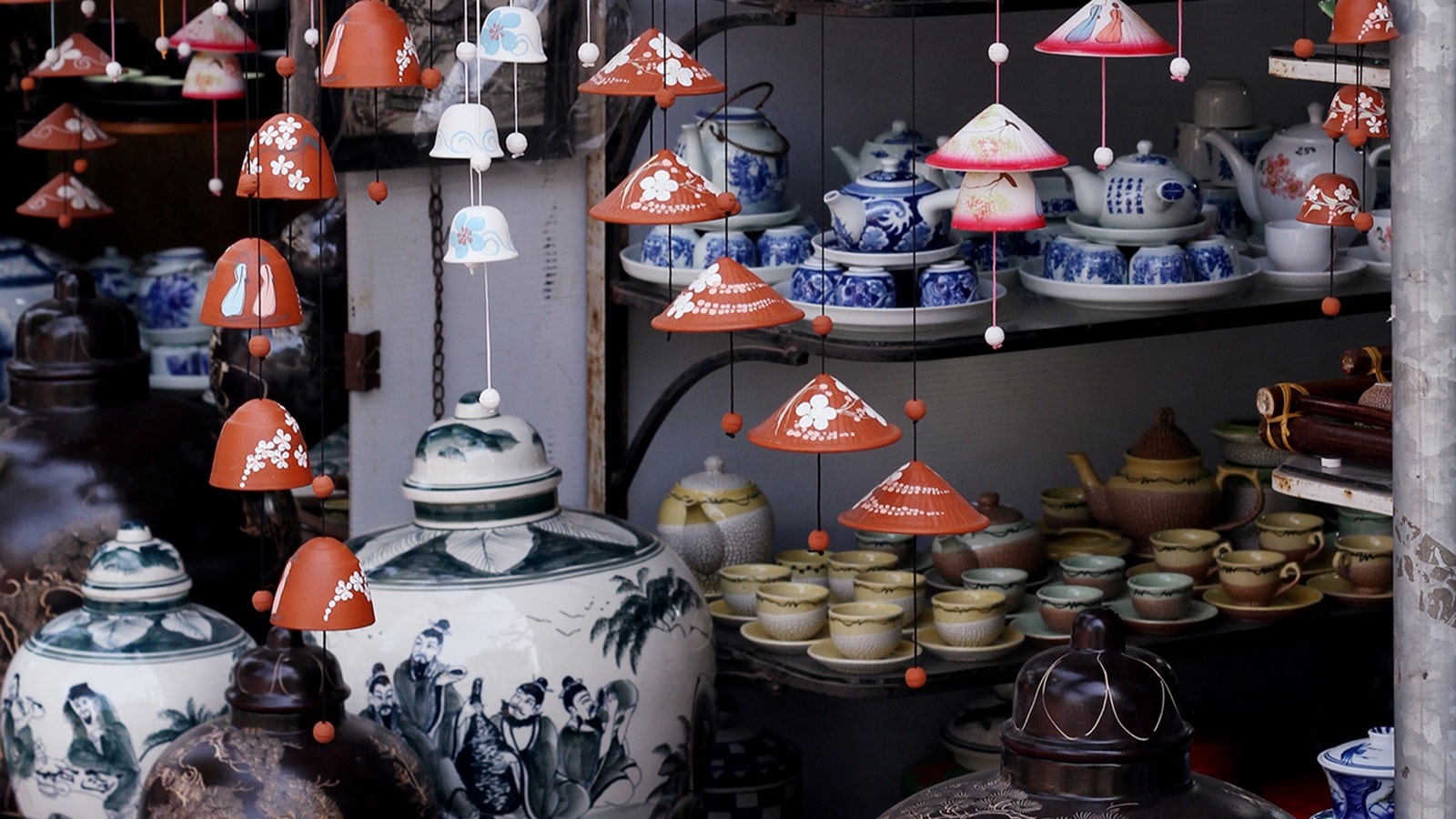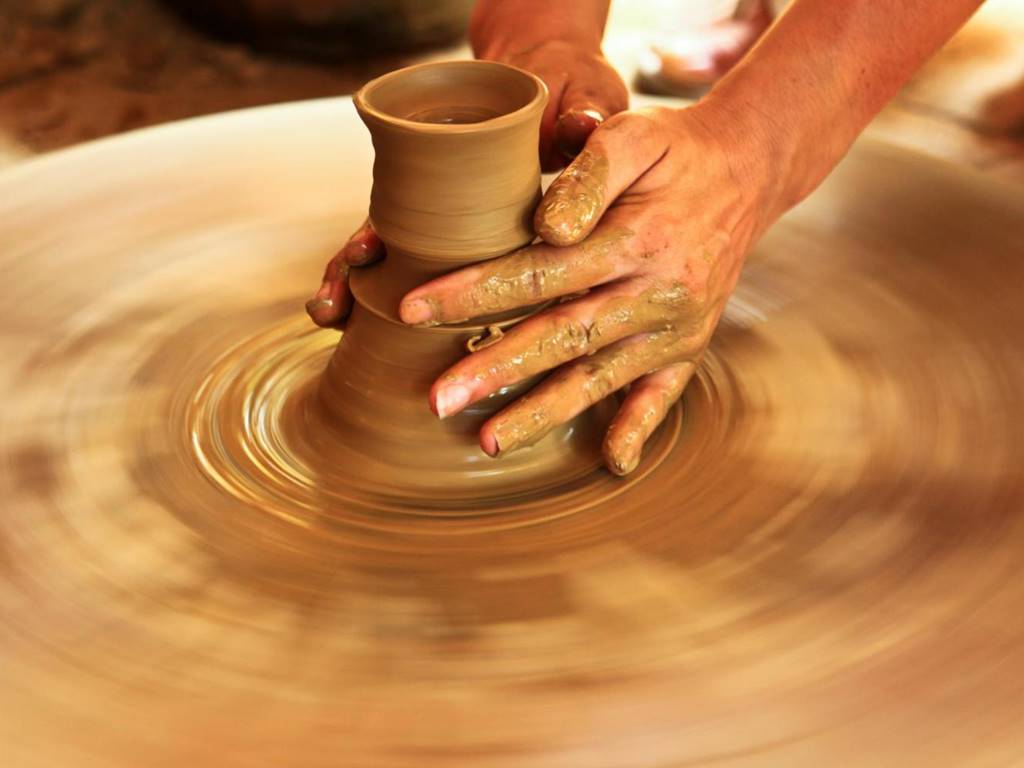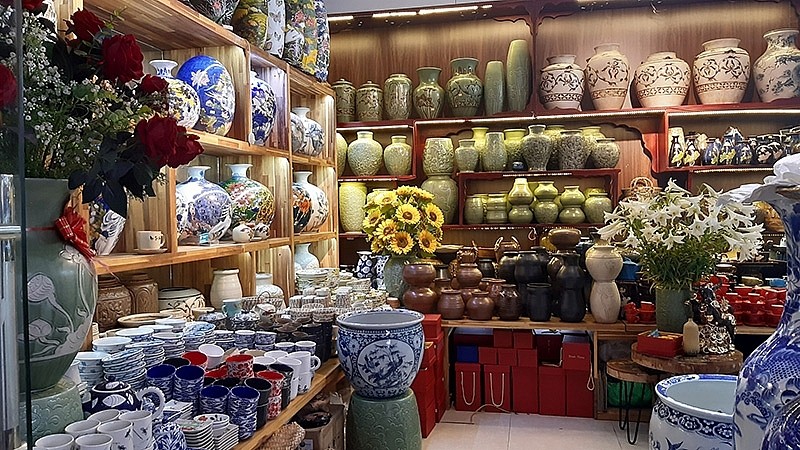News
Investigate Firing Methods in Bat Trang Ceramics Production
Bat Trang ceramics have long been celebrated for their enduring beauty, intricate designs, and remarkable durability. Originating from Bat Trang village, located near Hanoi, Vietnam, this traditional craft represents centuries of artisanal expertise and cultural heritage. A crucial factor behind the distinct quality of Bat Trang ceramics lies in its firing methods—a meticulous process that transforms raw clay into exquisite ceramic art. This article delves deeply into the various firing techniques employed in Bat Trang ceramics production, examining their historical evolution, technological intricacies, and impact on the final product’s aesthetics and functionality.
Historical Evolution of Firing Techniques in Bat Trang Ceramics

Exploring the history of Bat Trang ceramics provides essential context to understand how firing methods have evolved over time. The village’s pottery tradition dates back more than 700 years, during which artisans have refined their kiln technologies and firing processes to meet changing demands and artistic aspirations.
Early Kiln Technologies: From Open Fires to Primitive Kilns
In the earliest stages of Bat Trang ceramics production, artisans relied heavily on open fires or rudimentary pit kilns. These methods were straightforward but posed challenges in temperature control and uniformity during firing.
Open fires allowed for quick heating but often resulted in uneven temperatures, causing inconsistencies in the final ceramic pieces such as warping or cracking. Despite these limitations, early Bat Trang potters developed a deep intuitive understanding of the firing process, using trial and error to optimize conditions suitable for local clays.
As demand increased, potters transitioned into constructing primitive kilns—simple enclosed structures designed to trap heat more effectively. These early kilns enhanced temperature regulation and fuel efficiency, marking a significant progression in the village’s ceramic production capabilities.
The Introduction of Dragon Kilns and Their Influence
By the later periods, Vietnamese artisans incorporated dragon kilns, an elongated slope-shaped kiln capable of achieving higher firing temperatures through a controlled airflow system.
The dragon kiln’s design allowed for staged firing zones within the kiln chamber, facilitating different heat intensities tailored to diverse ceramic types or glaze applications. For Bat Trang ceramics, the adaptation of dragon kilns enabled the mass production of uniform batches while preserving handcrafted detail.
This innovation was pivotal in establishing Bat Trang’s reputation beyond regional boundaries, attracting both domestic and international patrons seeking fine-quality ceramics.
Modernization and Adoption of Electric Kilns
In recent decades, the advent of electricity and industrial advancements introduced electric kilns into Bat Trang’s ceramic workshops. These modern kilns offer precise temperature control, programmable firing cycles, and reduced pollution compared to traditional wood-fired or coal-fired kilns.
Electric kilns ensure consistent firing outcomes, allowing artisans to experiment with novel glazes and complex forms that require delicate thermal treatment. However, some purists argue that electric firing may lack the unique atmospheric effects provided by wood or coal combustion, which impart subtle textures and hues characteristic of traditional Bat Trang pottery.
Despite this debate, the fusion of old and new firing methods reflects the dynamic nature of Bat Trang ceramics production, balancing heritage preservation with contemporary innovation.
Types of Kilns Used in Bat Trang Ceramics Production

Understanding the variety of kilns used in Bat Trang ceramics is essential to appreciate how firing methods influence the material properties and aesthetics of finished products. Each kiln type offers distinct advantages and operational complexities.
Wood-Fired Kilns: Tradition Meets Artistry
Wood-fired kilns remain a cornerstone of Bat Trang ceramics, maintaining cultural authenticity and offering unique firing atmospheres.
Wood as fuel produces fluctuating heat patterns and introduces ash deposits that interact with glazes during firing, creating unpredictable yet aesthetically valued surface effects known as “ash glaze.” This phenomenon enriches the visual appeal by adding depth and texture to ceramics.
Artisans managing wood-fired kilns develop expert knowledge in fuel selection, stacking methods, and firing duration to attain optimal results. The labor-intensive nature of wood firing fosters close interaction between maker and material, embedding each piece with a sense of craftsmanship seldom replicated by mechanized methods.
Coal-Fired Kilns: Balancing Efficiency and Tradition
Coal-fired kilns emerged as a practical alternative in Bat Trang due to coal’s high calorific value and availability.
Compared to wood flames, coal burns hotter and longer, allowing faster ramp-up times and more stable peak temperatures. This efficiency suits the production of thicker or denser ceramics that require prolonged firing without deformation.
However, coal combustion emits greater pollutants and less nuanced flame atmospheres, potentially compromising the subtle aesthetics generated by wood firing. Consequently, coal-fired kilns are generally reserved for utilitarian ware or initial bisque firings before decorative glazing.
Electric Kilns: Precision and Consistency
Electric kilns represent a leap forward in controlling firing parameters such as heating rate, soak time, and cooling speed.
Equipped with digital controllers, electric kilns can replicate complex firing schedules ensuring reproducibility across batches. This precision benefits experimental glaze formulations and enables delicate pieces that might otherwise suffer damage in traditional kilns.
Moreover, electric firing eliminates smoke and particulate emissions, aligning with environmental regulations and improving workshop air quality.
Nevertheless, some artisans express concern that the sterile environment of electric kilns may reduce the organic variability cherished in handmade ceramics, prompting hybrid firing approaches combining electric bisque firing with wood or coal glaze firing.
Firing Temperature Profiles and Their Impact on Ceramic Quality

The thermal cycle that ceramics undergo during firing profoundly influences their mechanical strength, porosity, color development, and glaze maturity. Bat Trang ceramics benefit from meticulously crafted temperature profiles tailored to the specific clay body and decorative elements.
Biscuit Firing: Preparing the Clay Body
Biscuit firing is the initial stage where shaped clay items are heated to moderate temperatures (approximately 900°C to 1000°C) to harden them without vitrifying.
This step removes physical water and chemically bound moisture, stabilizing the ceramic structure for subsequent glazing. The quality of biscuit firing affects shrinkage rates and helps prevent cracking during later high-temperature firings.
Bat Trang artisans carefully monitor biscuit firing to produce sturdy but porous bodies ideal for glaze absorption and adherence.
Glaze Firing: Achieving Surface Perfection
Glaze firing involves reheating the bisque-fired ware to higher temperatures (ranging from 1200°C to 1300°C depending on clay and glaze composition) to melt and fuse glaze components onto the ceramic surface.
Precise control of peak temperature and soak duration ensures glazes mature fully, displaying desired glossiness, color saturation, and texture.
Over-firing risks excessive melting leading to glaze running or distortion, while under-firing produces dull or brittle coatings prone to crazing.
In Bat Trang, glaze firing protocols balance tradition with material science, preserving signature blue-white porcelain aesthetics alongside innovative motifs.
Cooling Rate: Influences on Microstructure and Appearance
The cooling stage post-glaze firing plays a critical role often overlooked in ceramic production.
Rapid cooling can induce thermal shock causing cracks, whereas slow controlled cooling facilitates crystal growth within the glaze matrix, enhancing opacity and iridescence.
Bat Trang potters employ varied cooling regimes depending on the ceramic type—functional ware prioritizes mechanical resilience with gradual cooling, whereas decorative pieces might embrace faster cooling for sharper glaze contrasts.
Understanding and manipulating cooling kinetics allow artisans to imbue each ceramic work with intentional character traits linked directly to firing mastery.
Environmental and Economic Considerations in Firing Practices
Beyond technical aspects, firing methods in Bat Trang ceramics are intertwined with environmental sustainability and economic viability.
Fuel Sources and Environmental Impact
Traditional wood and coal-fired kilns contribute significantly to deforestation, air pollution, and greenhouse gas emissions.
Recognizing these issues, some Bat Trang producers have adopted cleaner fuels like natural gas or shifted towards energy-efficient electric kilns to reduce ecological footprints.
Sustainable kiln designs incorporating insulation materials and airflow optimization also minimize fuel consumption without sacrificing quality.
Balancing environmental responsibility with cultural preservation remains an ongoing challenge necessitating community engagement and policy support.
Cost Implications of Different Firing Methods
Fuel expenses, labor intensity, and maintenance costs vary widely among firing options.
Wood firing requires continuous manual stoking and skilled supervision, increasing operational costs but yielding premium artisan pieces commanding higher market prices.
Electric kilns, though capital-intensive initially, reduce labor costs and waste, supporting scaled production for export markets.
Producers must strategically select firing methods aligned with target markets, product types, and resource availability to sustain livelihoods and competitive advantage.
Innovation and Future Directions in Sustainable Firing
Emerging trends include solar-powered kiln prototypes, biofuel experiments, and hybrid firing systems integrating traditional aesthetics with green technology.
Collaborations between Bat Trang artisans, engineers, and environmental organizations foster knowledge exchange aimed at reinventing firing methods respectful of heritage and planet health.
Investments in education and infrastructure will empower the next generation of ceramists to innovate sustainably while honoring ancestral wisdom embedded in every fired piece.
Artistic and Cultural Significance of Firing Techniques
Firing methods do not merely affect physical attributes but embody cultural narratives and aesthetic philosophies integral to Bat Trang ceramics.
Symbolism Embedded in Traditional Firing Processes
The ritualistic aspects of firing, such as collective kiln loading ceremonies and fire tending traditions, reinforce social bonds and transmit intangible cultural heritage.
The unpredictability inherent in wood-fired atmospheres symbolizes harmony between human endeavor and natural forces, mirrored in the ceramics’ organic imperfections celebrated by connoisseurs.
These symbolic dimensions elevate Bat Trang ceramics beyond utilitarian objects, transforming them into carriers of identity and history.
Firing Effects as a Medium of Artistic Expression
Artisans exploit firing-induced phenomena—like glaze crackling, ash deposits, and color gradations—as creative tools enriching visual storytelling.
Mastery over firing nuances distinguishes individual makers’ styles, contributing to a vibrant diversity within Bat Trang ceramics collections.
Appreciating these subtleties invites viewers to engage emotionally and intellectually with the artworks, deepening cultural appreciation.
Preservation Efforts and Education on Firing Heritage
Given modernization pressures, initiatives documenting traditional firing knowledge and training young artisans are vital.
Museums, workshops, and community festivals spotlight firing techniques, fostering pride and continuity.
Encouraging cross-generational dialogue ensures that the artistry woven into Bat Trang firing practices endures amidst global change.
Conclusion
The investigation of firing methods in Bat Trang ceramics production reveals a rich interplay of tradition, technology, artistry, and sustainability. From humble open fires to sophisticated electric kilns, each firing approach contributes uniquely to the physical qualities and cultural resonance of Bat Trang ceramics. Understanding kiln types, temperature profiles, environmental impacts, and symbolic meanings illuminates why firing remains a cornerstone in crafting these timeless works of art. As Bat Trang embraces innovation while safeguarding heritage, its ceramics continue to captivate the world—not just as functional objects, but as embodiments of human creativity and ancestral wisdom brought to life through fire.
